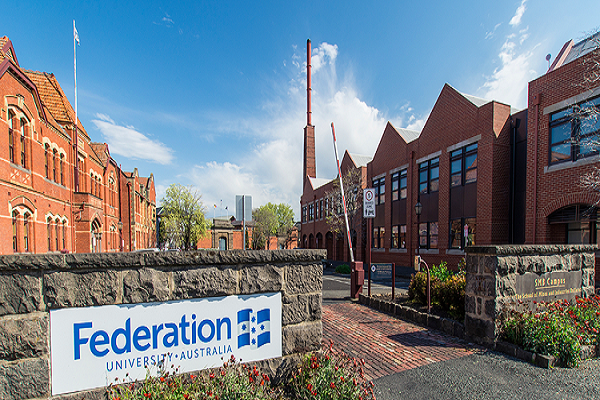Title:
AI and Machine Learning Applications in Infrastructure Engineering
Date:
September 24th, 2025 (UTC +10)
Organizer:
Federation University Australia
Symposium Chair:

Dr. Manoj Khandelwal
Personal Bio:
Dr. Manoj Khandelwal is an Associate Professor and Program Coordinator of Mining Engineering at Federation University Australia. With over 20 years of academic and research experience in rock mechanics, geotechnical engineering, and blasting, he is internationally recognised for his innovative use of artificial intelligence and machine learning techniques in geomechanics. Dr. Khandelwal has published over 200 peer-reviewed articles and has received multiple awards for research excellence and academic leadership. He serves on the editorial boards of several high-impact journals and has led numerous industry-funded research projects focusing on smart mining and rock behavior prediction using advanced computational models.
Committee Members:
Dr. Moshood Onifade, Federation University Australia, Australia, [email protected]
Dr. Danial Armaghani, University Technology Sydney, Australia, [email protected]
Dr. Rajesh Rai, Indian Institute of Technology Varanasi, India, [email protected]
Dr. Masoud Monjezi, Tarbiat Modares University, Iran, [email protected]
Call for Papers
Background:
The rapid integration of Artificial Intelligence (AI) and Machine Learning (ML) technologies into civil and infrastructure engineering is transforming traditional practices. With growing demands for resilient, sustainable, and efficient infrastructure, there is an increasing interest in intelligent tools that can improve structural monitoring, material behavior prediction, and real-time decision-making. These innovations are especially critical in the context of aging infrastructure, climate resilience, and smart urban planning.
Goal/Rationale:
This symposium aims to explore the intersection of AI/ML with infrastructure engineering, with a focus on applied research and industrial case studies. It will address key challenges such as data quality, model interpretability, integration with existing engineering workflows, and real-time monitoring using AI techniques. Participants will engage with leading researchers and practitioners to discuss novel algorithms, hybrid modelling, digital twin development, and the role of big data in predictive maintenance and infrastructure management. The symposium seeks to foster collaboration and define future directions for research and implementation.
Scope and Information for Participants:
Participants will gain insight into the current landscape and future prospects of AI/ML applications in infrastructure engineering.
Topics of interest include, but are not limited to:
- AI for predictive maintenance of infrastructure
- ML models for structural performance prediction
- Digital twin frameworks and real-time monitoring
- Deep learning in geotechnical and pavement engineering
- AI-enhanced construction automation and safety
- Data fusion and uncertainty quantification
Participants from academia, industry, and government sectors are encouraged to attend and contribute through presentations or discussions.
Topics:
The main topics of this symposium are listed below.
Geomechanics and Infrastructure Engineering
- Artificial Intelligence
- Machine Learning and Deep Learning
- Infrastructure Engineering
- Digital Twin Frameworks
- Construction Automation
- Data fusion
- Geomechanics and Rock Engineering
- Geographic Information System
Meanwhile, submissions aligned with the overall conference theme are also welcome.
Functional Materials
- Advanced Materials and Technologies
- Advanced Materials Processing and 3D Printing
- Advanced Nanomaterials and Graphene
- Aerospace Engineering
- Biomaterials
- Electric and Magnetic Materials
- Emerging Materials
- Energy Materials
- Glasses, Ceramics and Composites
- Material Mechanics and Structure
- Material Thermodynamics
- Metal and Alloy
- Optic and Acoustic Materials
- Polymer Science and Engineering
- Semiconductors and Super Conductors
- Smart Materials and Structures
Civil Engineering
- Bridge Engineering
- Cartography and Geographic Information System
- Computational Mechanics
- Disaster Prevention and Mitigation
- Environmental Engineering
- Environment-Friendly Construction and Development
- Geological Engineering
- Heating, Gas Supply, Ventilation and Air Conditioning Works
- Monitoring and Control of Structures
- Reliability and Durability of Structures
- Seismic Engineering
- Structural Engineering
- Structural Rehabilitation, Retrofitting and Strengthening
- Surveying Engineering
- Tunnel, Subway and Underground Facilities
- Urban Planning
- Water Supply and Drainage Engineering
Transportation Engineering
- Carrier Operation Engineering
- ITS Theory and Applications
- Low-carbon Transportation Technology
- Modern Logistics System Planning and Optimization
- Road and Railway Engineering
- Transportation and Social Economic Development
- Transportation Planning, Construction and Operation Organization
Energy Engineering
- Alternative Fuels
- Hydroelectric and Geothermal Power
- Integrated Energy Systems
- Nanotechnology Applications
- Nuclear Materials and Fuels
- Solar Cell Technology
- Solar Electricity and PV Applications
- Solar Thermal Applications
- Machine Design
- Mechanical CAD/CAM
- Mechanical Power Engineering
- Mechanical Dynamics
- Integrated Manufacturing
- Advanced Intelligent Mechatronics
Submission:
Prospective authors are kindly invited to submit full papers that include title, abstract, introduction, tables, figures, conclusion and references. It is unnecessary to submit an abstract in advance. Please submit your papers in English.
Each paper should be no less than 4 pages. One regular registration can cover a paper of 6 pages, and additional pages will be charged. Please format your paper well according to the conference template before submission. Paper Template Download
Please prepare your paper in both .doc/.docx and .pdf format and submit your full paper by email with both formats attached directly to [email protected]
Important Dates:
| Process | Date & Time |
|---|---|
| Submission Deadline | September 17, 2025 |
| Symposium Date | September 24, 2025 |
| Notification of Acceptance | 7-20 workdays |
Publication:
Accepted papers of the symposium will be published in Applied and Computational Engineering (ACE) (Print ISSN 2755-2721), and will be submitted to Conference Proceedings Citation Index (CPCI), Crossref, CNKI, Portico, Engineering Village (Inspec), Google Scholar, and other databases for indexing. The situation may be affected by factors among databases like processing time, workflow, policy, etc.
Publication info
Title: Applied and Computational Engineering (ACE)
Press: EWA Publishing, United Kingdom
ISSN: 2755-2721 2755-273X (electronic)
This symposium is organized by CONF-FMCE 2025 and it will independently proceed the submission and publication process.
* The papers will be exported to production and publication on a regular basis. Early-registered papers are expected to be published online earlier.
Ways to Participate
Venue:
University Drive, Mount Helen, Victoria 3350, Australia
Attend in Person:
If you want to attend the symposium on-site, please email [email protected]. The symposium seats are limited. Both contributors and non-contributors who wish to participate in the symposium in person need to apply to the symposium organizers.
VISA:
https://immi.homeaffairs.gov.au/homeIn order to ensure the information is correct and up to date, there may be changes which we are not aware of. And different countries have different rules for the visa application. It is always a good idea to check the latest regulations in your country. You should confirm details with your local Consular Office. This page just gives some general information of the visa application.
Australia Visa Information
Do I need a visa to enter Australia?
Unless you are an Australian citizen, you will need a valid Australian visa to enter the country. New Zealand passport holders can apply for a visa upon arrival in the country. All other passport holders, regardless of age, must apply for a visa before leaving home. You can apply for a range of Australian visa types, including tourist visas and working holiday visas, at your nearest Australian Embassy or Consulate. You can also apply for certain types of visas on the Australian Department of Home Affairs website.
There are different Australian visa types available for travelers to Australia. Knowing which Australian visa to apply for depends on the length of your stay, your passport and the purpose of your visit. You'll also need to meet certain financial and medical requirements, be outside of Australia when applying and maintain health insurance for the duration of your stay.
Electronic Travel Authority Visa (subclass 601)
This visa allows you to visit Australia as many times as you want, for up to a year, and stay for three months each visit. This visa is available to passport holders from a number of countries and regions, who live outside Australia. A step-by-step guide on how to apply is here.
E-Visitor (subclass 651)
This is a free visa for multiple visits to Australia for tourism or business purposes for up to three months at a time within a 12-month period. This visa is available to passport holders from a number of European countries and it cannot be extended.
Visitor visa (subclass 600)
The Visitor visa allows you to visit Australia, either for tourism or business purposes. It is open to all nationalities. Generally, a period of stay of up to three months is granted, but up to 12 months may be granted in certain circumstances. Applicants will have to pay a fee to submit their application.
How can I apply for an Australian tourist visa?
The application process may differ depending on which visa you need. You can only apply for the Electronic Travel Authority visa (subclass 601) through the Australian ETA app. A step-by-step guide on how to apply is located here.
For other visas, you can apply online by creating an ImmiAccount and completing the application process. Be sure to submit your application well in advance of your travel date to allow enough time for processing. You may be asked to provide further supporting information. You will be notified in writing if your tourist visa is approved and it will be digitally linked to your passport.
For more information on different visa types, and Australian visa requirements including how to apply for an Australian visa, visit the Department of Home Affairs website.
